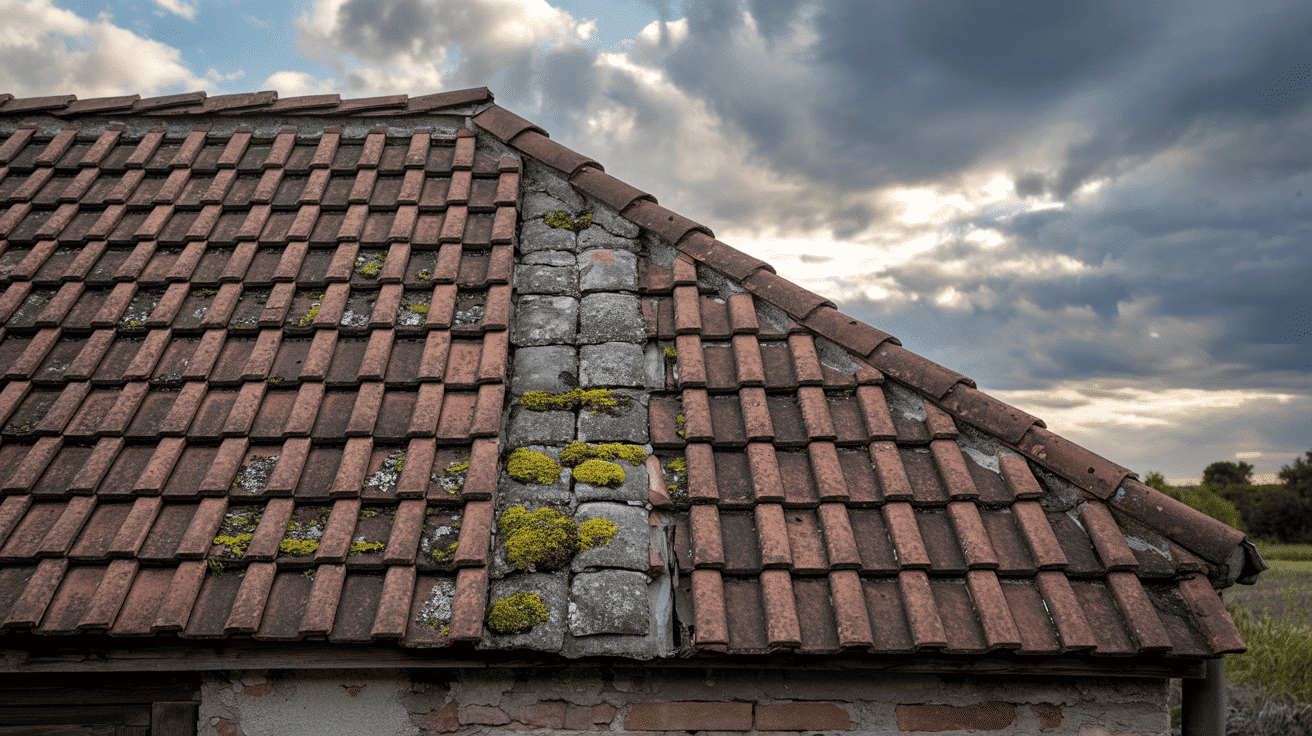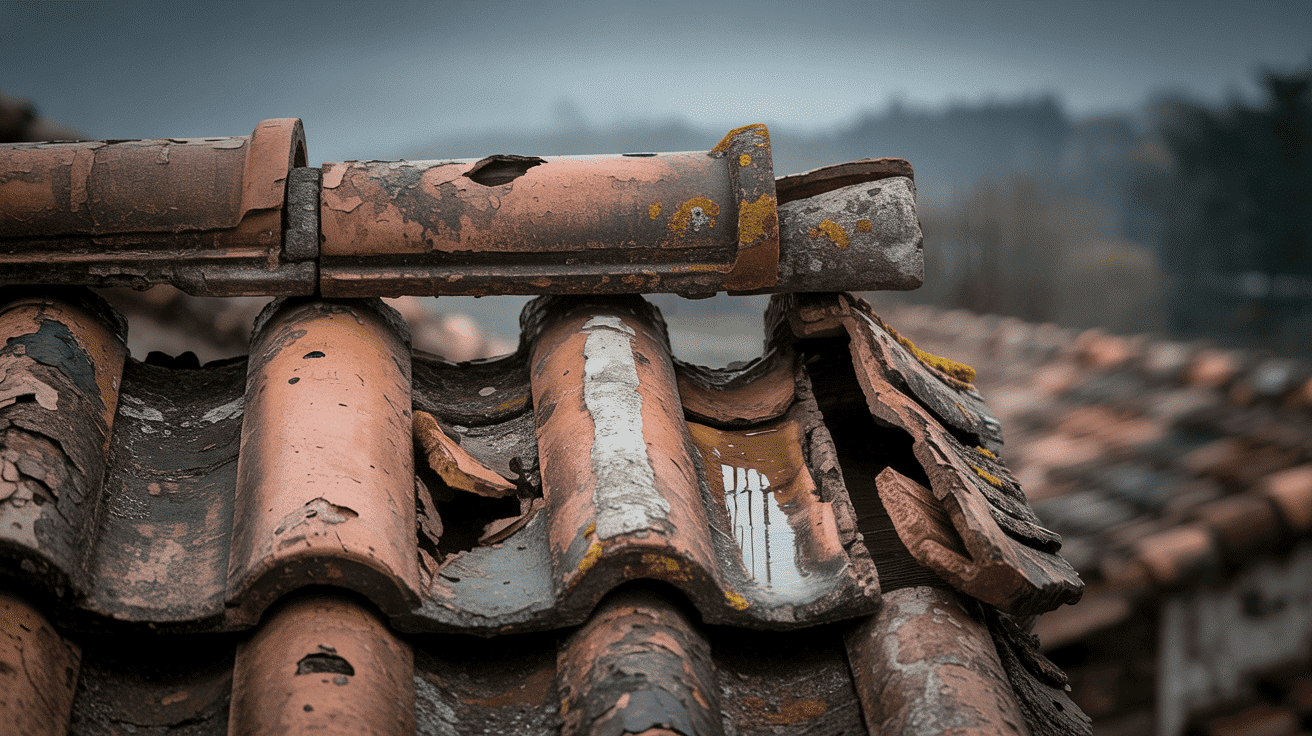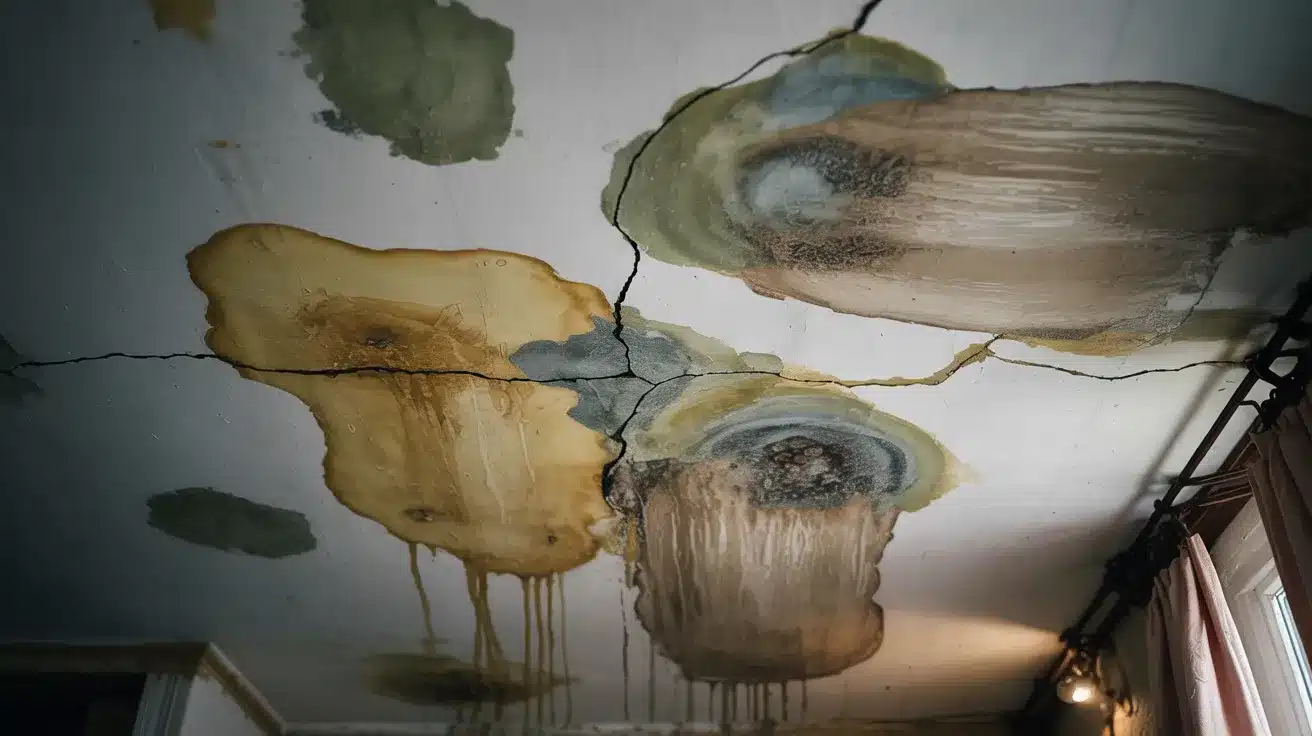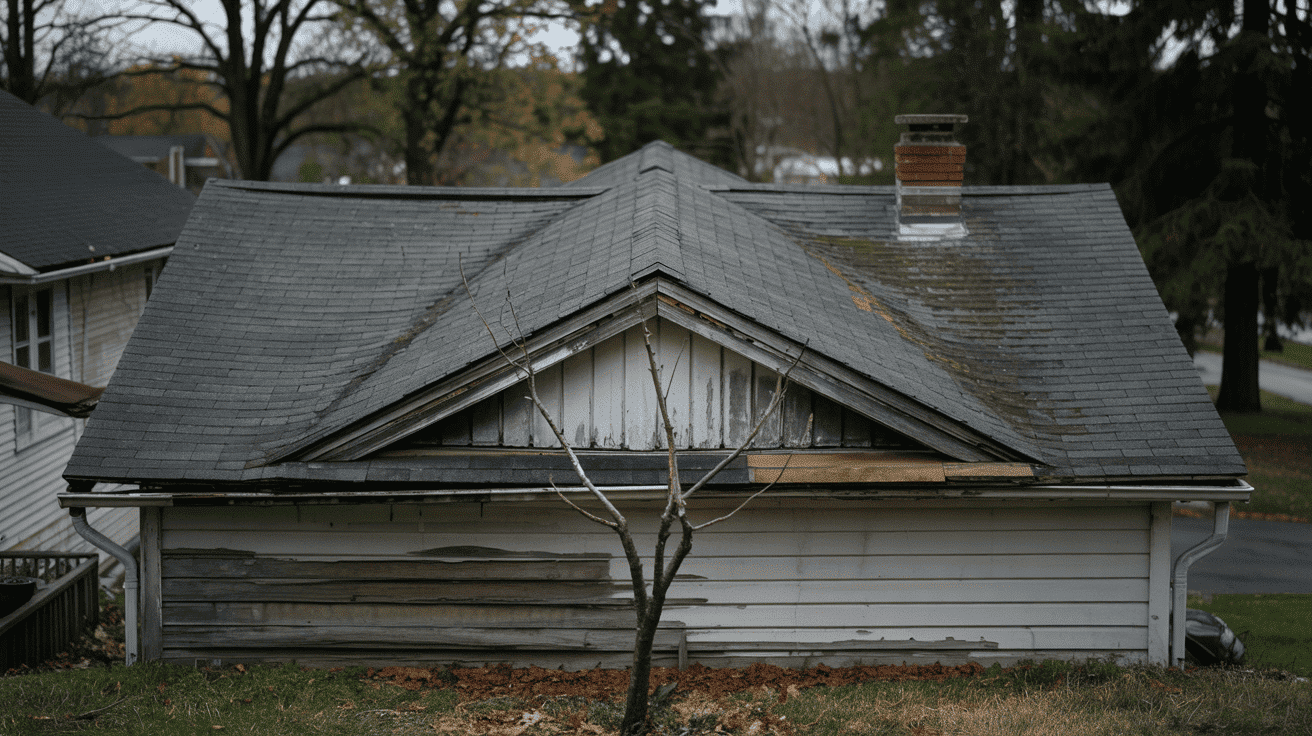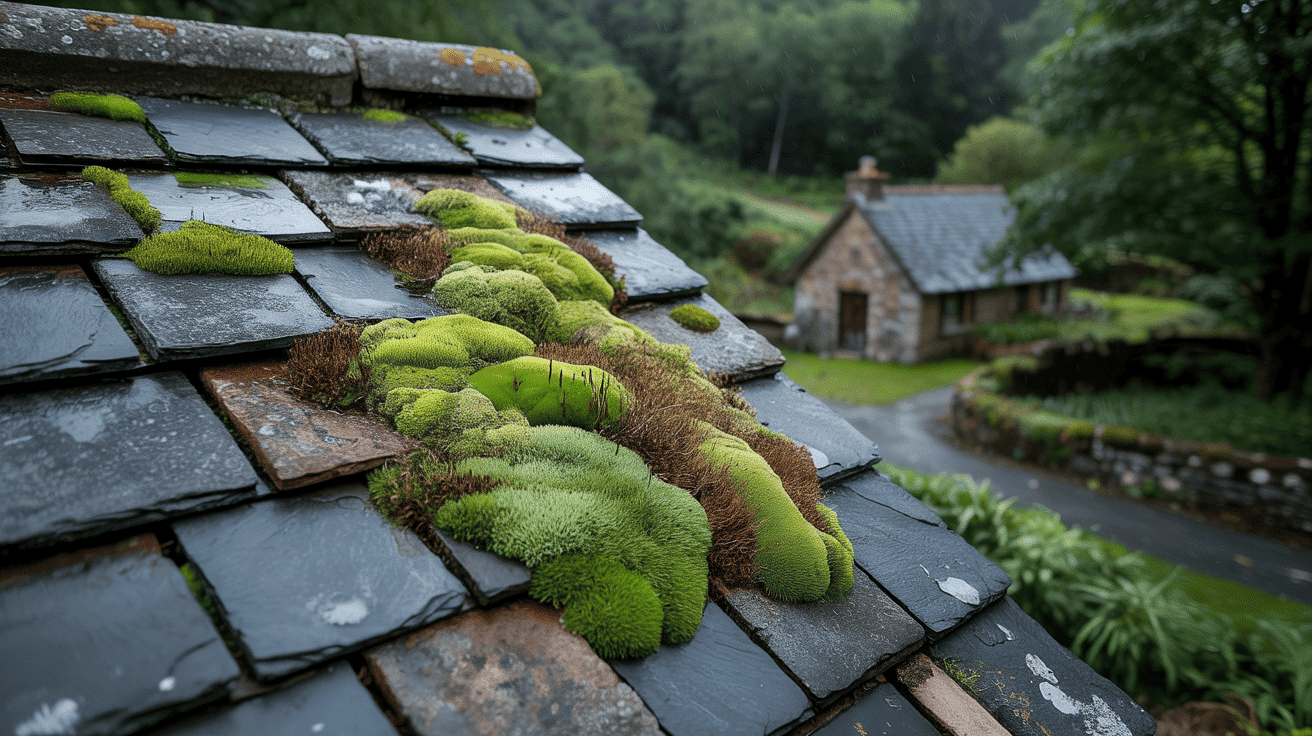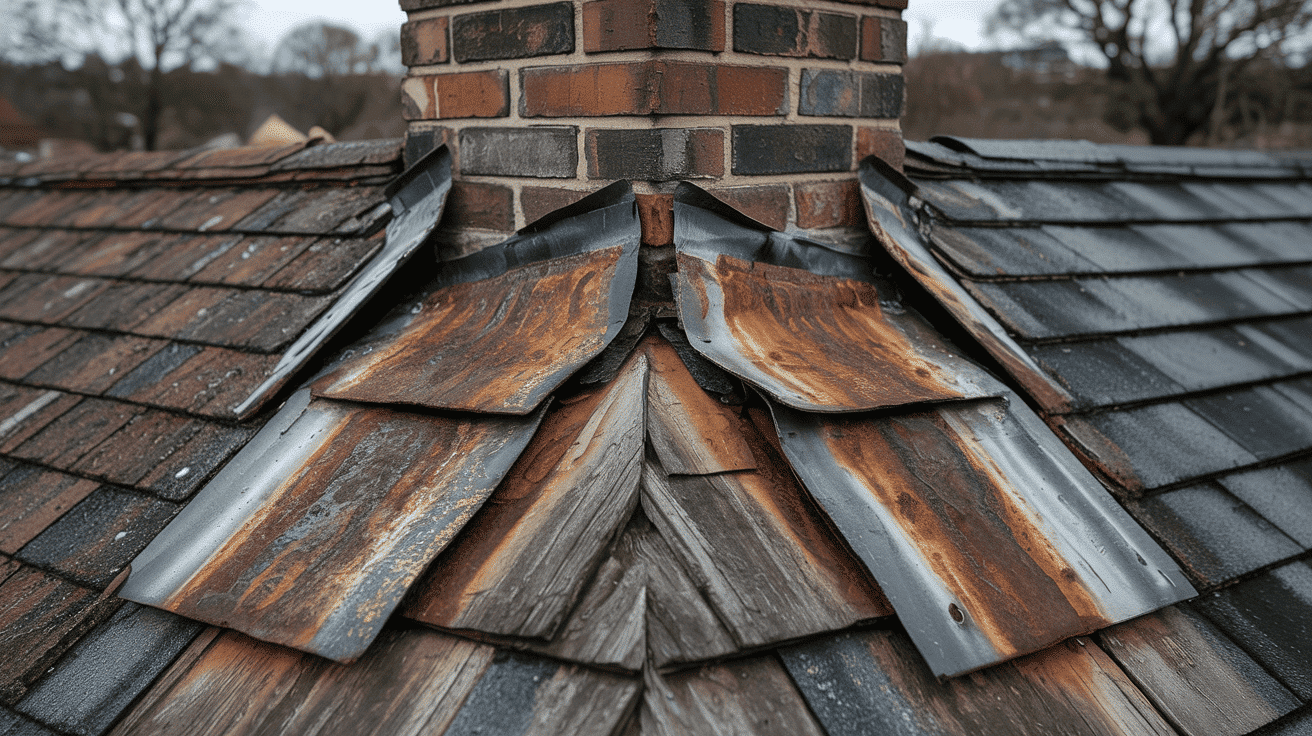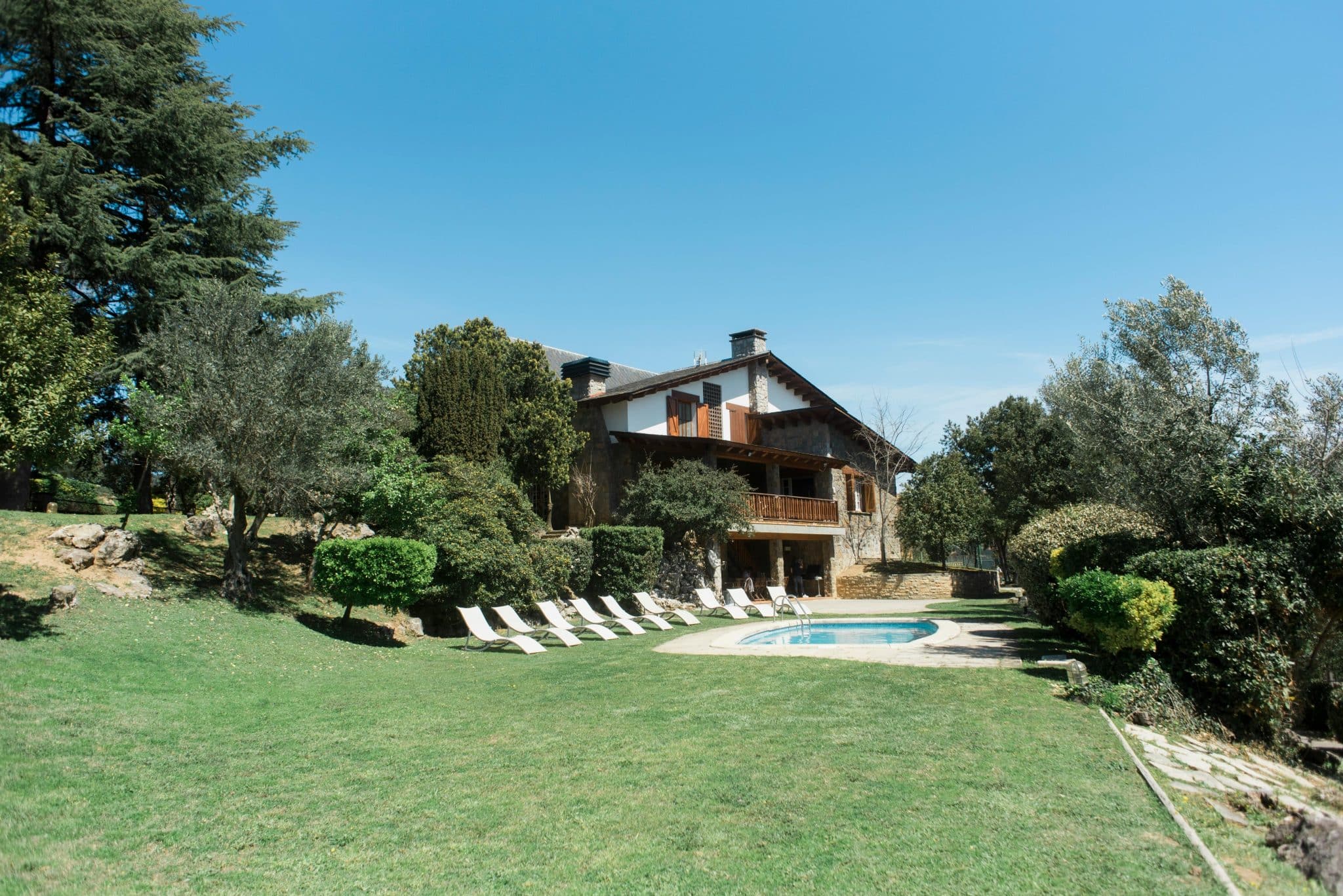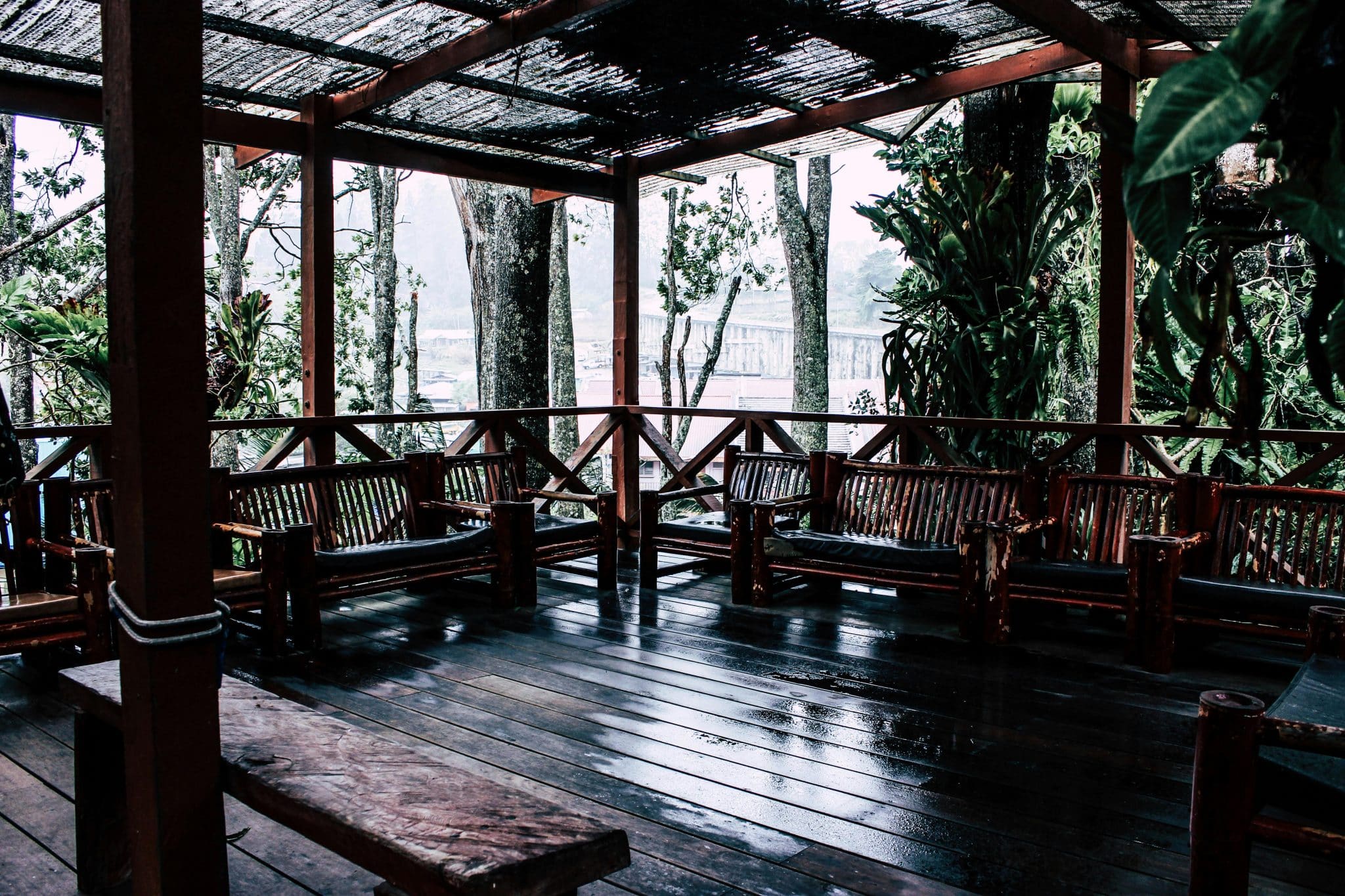Does your tile roof truly protect your home for decades, or are you setting yourself up for expensive surprises?
Most homeowners assume their tile roof will last forever without any maintenance. But here’s what roofing contractors don’t always tell you upfront: the actual lifespan depends on factors you can control.
From clay tiles lasting over 100 years to concrete options providing 30-50 years of protection, each material offers different benefits.
The difference between a roof that fails in 20 years versus one that protects your family for generations often comes down to understanding what affects durability.
This guide reveals exactly how long each tile type lasts and the proven steps to maximize your roof’s performance.
You’ll learn the warning signs that save thousands in repairs and the simple maintenance tips that extend your roof’s life.
What is a Concrete Tile Roof?
Concrete tiles are manufactured roofing materials made from a mixture of cement, sand, and water.
The mixture is molded into various shapes and profiles and then cured to create strong, weather-resistant tiles. These tiles can be colored during production or painted after installation to match any home style.
Unlike natural materials, concrete tiles offer consistent quality and appearance. They’re heavier than asphalt shingles but lighter than clay tiles, making them suitable for most home structures with proper support.
Where You’ll Find Concrete Tile Roofs:
- Residential homes commonly use concrete tiles in warm climates, where durability and heat resistance are most important. Popular in the southwestern United States, Florida, and coastal areas where homes need protection from intense sun and occasional storms.
- Commercial buildings often choose concrete tiles for low-slope applications, such as shopping centers, office complexes, and industrial facilities. The tiles work well on both steep residential roofs and flatter commercial structures.
How Long Can Each Type of Tile Last?
Different tile materials offer vastly different lifespans, from budget options to premium choices that can protect homes for generations. Understanding these differences helps you choose the right tile for your budget and long-term plans.
| Tile Type | Lifespan | Key Features |
|---|---|---|
| Clay Tiles | 50-100+ Years | Clay tiles are resistant to rot, insects, and fire. They also withstand harsh weather conditions and require proper installation and maintenance to ensure longevity. |
| Concrete Tiles | 30-50+ Years | Concrete tiles are made from cement, sand, and water. They offer a lower cost than clay tiles and are reliable with good maintenance. |
| Slate Tiles | 75-200+ Years | Slate tiles are extremely durable and can last for generations. They have a higher cost and require specialized installation due to their weight. |
| Ceramic Tiles | 30-50 Years | Ceramic tiles are glazed for moisture and UV protection. They provide solid performance but are not as long-lasting as clay tiles. |
| Synthetic Tiles | 30-50 Years | Synthetic tiles are made from recycled materials, making them lighter and easier to install. However, they have a shorter lifespan compared to natural tiles. |
Cost vs. Longevity Breakdown
- Best Value Long-term: Clay tiles (high upfront cost, longest lifespan)
- Budget-Friendly: Concrete tiles (moderate cost, decent lifespan)
- Premium Investment: Slate tiles (highest cost, maximum durability)
- Modern Alternative: Synthetic tiles (moderate cost, proven for 30+ years)
Factors That Affect the Lifespan of Concrete Tile Roofs
Several key factors determine how long your concrete tile roof will protect your home. Understanding these helps you make smart choices and get the most from your investment.
1. Climate & Weather Conditions Matter: Your local weather patterns heavily influence concrete tile durability. Areas with frequent freeze-thaw cycles stress tiles more than stable climates. High winds, hail, and intense UV exposure also accelerate wear.
Coastal regions face salt air corrosion, while desert areas deal with extreme temperature swings. Humidity levels also affect the aging of concrete tiles over time. Choose tiles rated for your specific climate conditions.
2. Installation Quality Is Critical: Even the best concrete tiles fail when installed incorrectly. Skilled roofers know proper overlap patterns, fastening techniques, and waterproofing methods that prevent leaks.
Poor installation causes tiles to shift, crack, or allow water penetration. The expertise of your installation team directly impacts how well your roof performs for years to come.
3. Tile Quality Makes the Difference: The grade of concrete tiles you choose sets the foundation for your roof’s lifespan. Premium concrete tiles made with high-quality materials resist cracking and fading better than cheaper alternatives.
Higher-quality tiles also maintain their color longer and handle thermal expansion without breaking. Spending more upfront on quality materials often saves money over decades of ownership.
How to Extend the Lifespan of Your Concrete Tile Roof
Follow these proven steps to maximize your concrete tile roof’s performance and prevent costly repairs.
1. Routine Inspections Are Essential:
- Check your roof twice yearly – spring and fall work best
- Look for cracked, chipped, or missing tiles from ground level
- Use binoculars instead of walking on tiles to avoid breakage
2. Cleaning and Maintenance Tips:
- Remove leaves and debris monthly to prevent water buildup
- Clear gutters every six months to ensure proper drainage
- Install zinc strips near the roof peaks to prevent moss growth
- Trim tree branches at least six feet away from the roof surface
3. Handle Repairs Promptly:
- Replace damaged tiles immediately to prevent water entry
- Keep spare tiles from the original installation for future repairs
- Hire qualified professionals for all tile replacement work
4. Protective Coatings Add Value:
- Apply concrete sealers every five to seven years
- Use UV-resistant coatings to prevent color fading
- Choose breathable sealants that allow moisture to escape
Regular attention to these areas keeps your concrete tile roof performing at its peak for decades.
Signs Your Tile Roof Needs Repair
Spot these problems early to prevent costly repairs. Your roof gives clear warning signs before major damage occurs. Address minor issues now to prevent costly emergencies later.
1. Cracked or Missing Tiles
Broken or missing tiles create immediate water entry points. Look for visible cracks, chips, or gaps in your roof pattern.
Even small cracks let water reach the underlayment, causing rot and structural damage that gets more expensive over time.
2. Water Stains Inside Your Home
Yellow or brown ceiling spots mean your roof is already leaking. You might also notice wall discoloration or musty attic odors. These stains indicate water damage is spreading beneath the surface, so act fast to prevent mold and structural problems.
3. Sagging Rooflines
Look at your roof’s profile for dips or curves where lines should be straight. Sagging indicates serious structural issues from failed underlayment or rotted supports. This problem needs immediate professional attention.
4. Moss or Algae Growth
Green patches hold moisture against tiles, making them deteriorate faster. Moss and algae also work under tiles, loosening them over time.
This problem is common on shaded areas and north-facing slopes where moisture lingers.
5. Loose Flashing
Loose flashing creates prime water entry points that cause major leaks during storms. Small repairs prevent big water damage bills.
The Environmental Benefits of Concrete Tile Roofs
- Energy Savings That Matter: Concrete tile roofs can reduce your annual energy bills by 10-20%. The tiles reflect heat instead of absorbing it, keeping your home cooler naturally and reducing air conditioning costs.
- Built-in Climate Control: These roofs reflect up to 77% of solar energy away from your home while creating natural insulation through thermal mass. This helps maintain steady indoor temperatures year-round, reducing strain on heating and cooling systems.
- Comfort Benefits: Your home stays more comfortable with fewer temperature swings. The tiles also provide better sound insulation than metal or asphalt roofing.
- Environmental Impact: Concrete tiles last 50+ years, creating less waste than other roofing materials. Made from natural materials like sand and cement, they’re fully recyclable at the end of life and help reduce urban heat islands in neighborhoods.
Conclusion
Your tile roof investment pays off when you take the right steps to protect it.
Regular inspections, prompt repairs, and quality materials determine whether your roof reaches its full potential. Clay tiles offer the longest protection, while concrete tiles provide excellent value for most homeowners.
Why does this matter? A well-maintained tile roof keeps your family safe and comfortable while providing reliable protection against harsh weather. The environmental benefits also reduce your energy bills through natural temperature control.
What’s your next step? Schedule a professional roof inspection this season to assess your current roof’s condition.
Document any issues you find and create a maintenance schedule. Don’t wait for leaks to appear – prevention always works better than emergency repairs.
Take action today to protect your home’s most important barrier against the elements.

